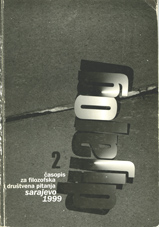
Razgovor Cipriana Mihalija sa Jean-Luc Nancyjem
Interview with Jean-Luc Nancy by Cipran Mihali
More...We kindly inform you that, as long as the subject affiliation of our 300.000+ articles is in progress, you might get unsufficient or no results on your third level or second level search. In this case, please broaden your search criteria.

Interview with Jean-Luc Nancy by Cipran Mihali
More...
Purpose of Article. The study deals with the development and research of original methods for creating an artistic image of a contemporary in folk and stage choreography. A significant role in the mentioned creative process is conducted by the professional skills of the ballet masters that in specific cases are not entirely careful with the enrichment of art pieces peculiarities with other expressive elements of dance, and perceive it as a requirement to take a few expressive and artistic means of choreography and mix them into one. Methodology. The research methodology is based on the use of comparative and critical methods. The specified methodological approach allows revealing and analyzing the distinctive features of the application of expressive and artistic means in the creative and production work of famous ballet masters of Ukraine, to identify distinctive features of their implementation due to the genre and type of the dance art. Scientific Novelty. The scientific novelty of the work lies in the extension of the associative process of creative imagination of a ballet master and director, which acquires a particular poetry while listening to music, and, also, to identify the areas of the dance’s idea preservation, identity and originality of the dance pattern or manner of a performance, with a multiplying of the mentioned aspects by the achievement of the professional folk choreography art to raise it above the original. Conclusions. Carrying out stage performance of folk dance, where the main character is an image of a contemporary, the ballet master, combining in musical and visual synthesis various arts, and possessing all the expressive means of dance, should understand that "none of the types of dance is accidental. It reveals the temperament of the people, the system of movements coordination, which is different in different peoples, the relationship between movements and music, connection with the history and life of the people” [6, 10].
More...
The purpose of the work. The research is dedicated to the works of S. Pavlyuschenko from the point of “creative society” view. The certain article talks about the influence of S. Pavlyuschenko onto the formation of several generations of famous Ukrainian musicians as well as onto the aesthetics of Ukrainian intelligence. This virtuoso dedicated the own life to Ukrainian folk songs, which helped the development of Ukrainian culture. The methodology of the research is based on the application of universal scientific methods, in particular: historical, chronological, the method of structural and computational analysis, systematization, and generalization. Scientific novelty. S. Pavlyuschenko was also a talented conductor and a close follower of masterpieces of H.Veryovka’s choir. The aspects of master’s artistic personality can be seen in his works at the position of Dean of Performing Folk Song Department at the Kiev National University of Culture and Arts (KNUCA). Conclusions. While analyzing Pavlyuschenko’s creative career, we have to consider him not only as a performer but also as a gifted teacher. Analyzing S. Pavlyuschenko’s creative path, scientists have the opportunity to significantly expand the perception of the artist’s work and its significance in terms of the Ukrainian musical art.
More...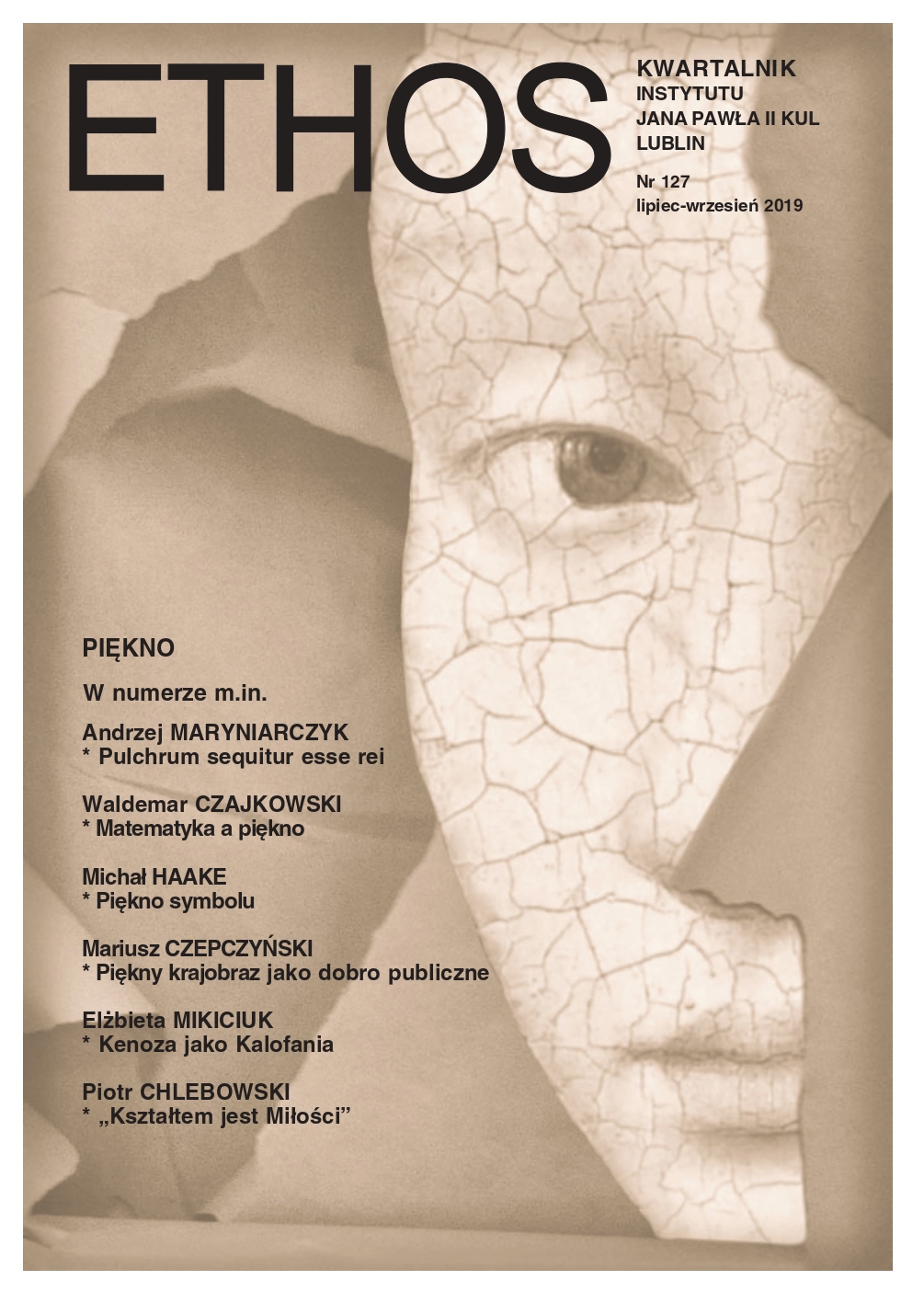
According to Geert Hofstede and Gert Jan Hofstede, cultural heroes (e.g. artists) provide a personalized link between symbols and rituals in culture. This article assumes that ‘heroes,’ for instance creators of art brut, embody important choices of life values. The French term art brut, meaning ‘raw art,’ or ‘rough art,’ was created by the French artist Jean Dubuffet to describe art created outside the boundaries of mainstream culture. Art brut is a unique phenomenon appealing in particular to those who accept a special responsibility for the artifacts thus created. Today, all the shapes of virtue (embraced by truth, goodness, and beauty) are corollary of a consensus, that is, they establish a comparative measure of things and of people. Only art, provided it is not kitsch, escapes this new form of power. Hermann Broch reanchors the value of beauty in the metaphysical realm and puts it in the center of the aesthetic discourse. Within Kantian aesthetics, imagination is analyzed as related to the pure forms of time and space, and the scheme this analysis renders is considered as the model for understanding art. However, Jacques Rancière warns against extrapolating this paradigm onto “politicized” thinking, in particular by means of the media which use emotional images and evoke certain sentiments in order to justify individual opinions without appealing to the imagination. Social stratification, which is a mark of the modern (philistine and bourgeoise) society, excludes certain individuals (for instance, certain artists) from public discourse, or even removes them from the public horizon. Currently, we witness gradual disappearance of axiological considerations combining ethics with aesthetics and linking the value of the good to that of beauty. Ethical and human values, such as those inherent in the Decalogue, are still recognized, but they are no longer considered as binding: rather, they are privatized and perceived as relative to particular historical circumstances, which, in turn, are relativized by the humanities, as well as by the social sciences.
More...
Kada se tvrdi da je "svijet" danas izgubio mjeru i razlog vlastite nesvodljivosti prodorom planetarne tehnike uobičajeno se dodaje da je u nadoknadu za taj gubitak dobio nešto novo. Jednoznačno se iskazuje da je ta "novost" rezultat napretka i razvitka modernoga znanstveno-tehničkoga odnosa spram bitka.
More...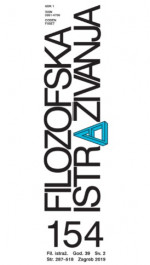
Pejović verkörpert in seiner Person das ursprüngliche philosophische Ethos und die Gelehrsamkeit. Die Stärke seines Denkens spiegelt sich in der verfeinerten Analyse des Themas wider. Sein literarisches Talent ist klar und er fühlt sich wie ein Virtuose und ein Künstler von Worten und Stil, der stellenweise poetisch ist. Er spricht leicht über die schwierigsten Themen der Philosophie. Er besitzt einen klaren, lehrreichen und enthusiastisch angemessenen, verfeinerten und raffinierten Ausdruck, der über alle unsere philosophischen Autoren hinausgeht. Dies wird bereits in den Titeln seiner Bücher, Studien, Aufsätze und Artikel sichtbar, die die Tiefe seiner Bedeutung angeben, und als würde die Bedeutung des gesamten Textes in ihnen selbst liegen. Obwohl nicht der Einzige, zeigte Pejović, dass es möglich war, anders zu denken, neue Perspektiven zu öffnen, sich der Zukunft zu öffnen, indem man aus dem marxistischen Regenmantel herauskommt, in den wir fast alle gehüllt waren. Professor Pejović demonstriert, wie sich die Evolution entwickeln kann, um auf Kommendes, Neues und Andersartiges zu treffen. Natürlich ist das Neue und Andersartige allein dadurch nicht schon hier, aber um neue Horizonte zu eröffnen, müssen wir gegen die Strömung vorgehen.
More...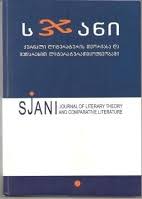
In the 19th c. translation of plays by European playwrights and their inclusion in the repertoire of the Georgian theatre was regarded as one of the significant directions, as this was a useful process of mutual acquaintance and exchange of values. “Translated literature is a treasure for intellectual progress and success of every people”, – well-known Georgian publicist and literary critic Petre Umikashvili noted, – “We partake of the success of the intellect of the world, its intellectual life, we adopt its education, partake of and sympathize with its joy and pain”. The viewpoint of Ilia Chavchavadze, Akaki Tsereteli, Valerian Gunia and others Georgian writers of that period concerning translations and adapted works are in full harmony with the modern criteria, such as: the translator’s creative talent, a good command of both languages and maximum approximation of the translation with the original. According to Valerian Gunia, adaptation of other authors’ works is an even more difficult process and, in addition to the above-mentioned the qualities, the author of an adaptation “must have the knowledge of life and human beings, sense of moderation, critical mind and aesthetical taste, he must study the laws of the stage and art of drama. Adaptation of a play is the same as writing of a play; often it is easier to compose a new play than to adapt a play in a proper and artistic manner.”
More...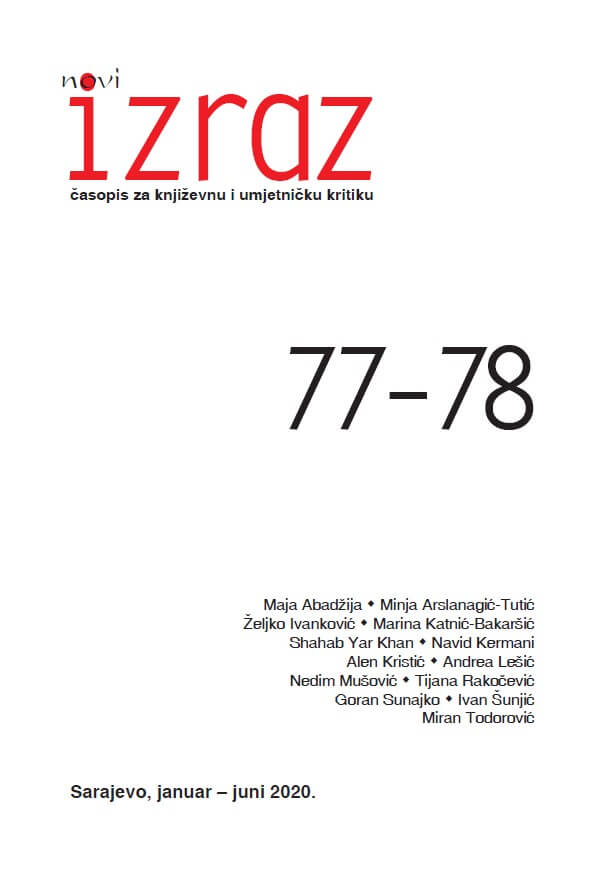
Pri koncu 2020. godine, u okrilju izdavačke kuće “Synopsis” iz Sarajeva uz potporu Tradukija, svjetlo bi dana trebala ugledati knjiga Navida Kermanija “Nevjerničko čuđenje – O kršćanstvu” u našem prijevodu. Uz dopuštenje njemačkog izdavača C. H. Becka u ovom broju “Novog Izraza” donosimo izbor pet likovnih eseja iz te knjige sa željom da najavimo njezino objavljivanje, ali i da skrenemo pozornost na raskošan stvaralački opus Navida Kermanija, istaknutog njemačkog pisca, publicista, doktora orijentalnih znanosti i dramaturga, jednog od najprofiliranijih njemačkih intelektualaca.
More...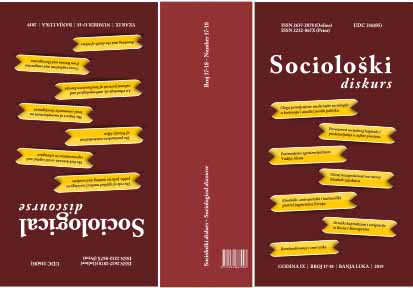
With the intention of portraying the film director (actor, screenwriter) Woody Allen as a (non-typical) existentialist and postmodernist in the genre of film comedy, the author of this paper first explicates the basic terms – philosophical existentialism and artistic postmodernism. The central part of this paper is dedicated to the analysis of typical scenes from the most important Allen’s films (Annie Hall, Love and Death, Irrational Man, etc.) where, on the one hand, his position on the meaninglessness of life, death, the absurd, despair is emphasizedand in which, on the other, he uses certain postmodern forms to aesthetically shape his thoughts. The research approach is close to the cultural studies discourse in it being multidisciplinary, that is, drawing together sociology, philosophy, psychology, semiology and aesthetics in an intrinsic, and not a mechanic manner. The author’s aim is to empirically determine whether and to which extent Woody Allen’s film creativity is informed by the existentialist thought of Kierkegaard, Heidegger or Sartre, on the one hand, and how affected he is in the aesthetic sense by postmodern philosophers Lyotard, Jameson and Baudrillard, on the other. Despite the fact that Woody Allen is not a typical postmodernist, it is challenging and creatively inspirational to examine the specific characteristics of his postmodernist expression (intertextuality, self-reflectiveness, nonlinear narrative, eclecticism, intertwining of genre conventions), as well as the postmodernist narrative techniques he employs (parody, irony, pastiche, satire, allusion).
More...
With the intention of portraying the film director (actor, screenwriter) Woody Allen as a (non-typical) existentialist and postmodernist in the genre of film comedy, the author of this paper first explicates the basic terms – philosophical existentialism and artistic postmodernism. The central part of this paper is dedicated to the analysis of typical scenes from the most important Allen’s films (Annie Hall, Love and Death, Irrational Man, etc.) where, on the one hand, his position on the meaninglessness of life, death, the absurd, despair is emphasizedand in which, on the other, he uses certain postmodern forms to aesthetically shape his thoughts. The research approach is close to the cultural studies discourse in it being multidisciplinary, that is, drawing together sociology, philosophy, psychology, semiology and aesthetics in an intrinsic, and not a mechanic manner. The author’s aim is to empirically determine whether and to which extent Woody Allen’s film creativity is informed by the existentialist thought of Kierkegaard, Heidegger or Sartre, on the one hand, and how affected he is in the aesthetic sense by postmodern philosophers Lyotard, Jameson and Baudrillard, on the other. Despite the fact that Woody Allen is not a typical postmodernist, it is challenging and creatively inspirational to examine the specific characteristics of his postmodernist expression (intertextuality, self-reflectiveness, nonlinear narrative, eclecticism, intertwining of genre conventions), as well as the postmodernist narrative techniques he employs (parody, irony, pastiche, satire, allusion).
More...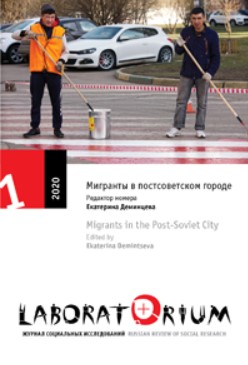
Review of: Ivan Burmistrov - Raja Adal. Beauty in the Age of Empire: Japan, Egypt, and the Global History of Aesthetic Education. New York: Columbia University Press, 2019. 296 pp. ISBN 978-0-231-19116-6.
More...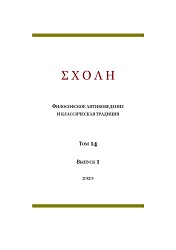
This paper discusses the system of the pictorial depth representation, typical for Giotto and other Italian artists of 14th century. Differing from the linear perspective, this system has a number of peculiar features, and its own consistent logic for the formation of pictorial space. The paper is especially focused on the contradictions of such a system, which lead to the appearance of impossible figures, and the ways in which the artists solved these difficulties.
More...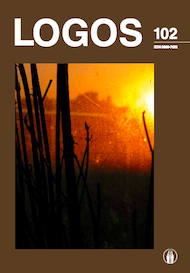
The article discusses the architectural design works of the renowned Lithuanian architect professor, Rimantas Buivydas, as they relate to symbolism and the themes of public space design. It also specifically deals with his participation in the tradition of placing symbols in architectural design projects and in his designs for public spaces. For the analysis of this tradition, ideas of Carl Gustav Jung, Juan Edouard Cirlot and Umberto Eco are used. From Buivydas’s architectural legacy as well as from his theoretical studies, the principles of composition for public spaces and the aesthetics of their architectural design are analyzed. The focus is mostly on how symbols are coded in the architectural design plans and sculptures that dominate in the compositions.
More...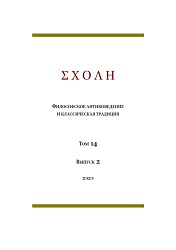
The article is devoted to the study of ontological, aesthetical and anthropological features of visual communication in Plato and Thomas Mann. I compare T. Mann’s Death in Venice artistic conception with the philosophical understanding of the image, contemplation, beauty and Eros of Plato, primarily in the dialogues Phaedrus and Sym-posium (with some reference to F. Nietzsche and the film by L. Visconti). The author ex-plores the specifics of the visual-plastic worldview and the contemplative cognition of being, determined by the erotic foundation of the aesthetic contemplation of the human image as phenomenal manifestation of truth, fundamentally different from the one re-vealed in speech communication, and even capable of being autonomous from it, and represents the philosophical and artistic phenomenology of the development, transfor-mation and implementation of such consciousness. The role of Athens and Venice as particularly significant historical-cultural topoi of visual communication is specially emphasized.
More...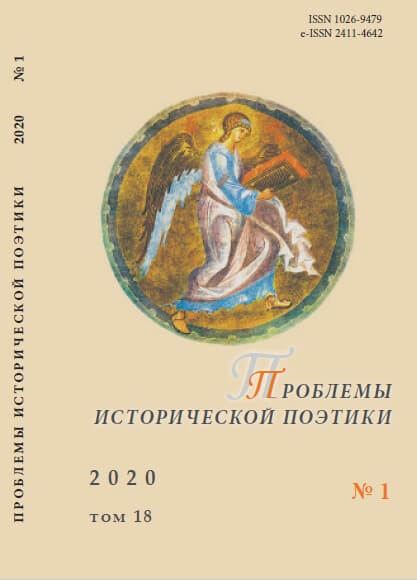
Based on the material of “Dead Souls”, the problem of the correlation of the “native” and the “universal” is considered. The author of the article highlights the special paraphrastic aspect of the interpretation of Russian classical literature, which includes both Western European aesthetic landmarks and the Orthodox cultural tradition, emphasizing their interweaving and mutual influence. In this aspect, the need to restore the full version of the name of Gogol’s poem is argued. The semantics of the cover of a separate edition of “Dead Souls” is analyzed. The author traces the paraphrastic context of the poem, referring to Dante’s “Divine Comedy”, which does not come down to motives, reminiscences, plot coincidences, but actualizes the unified Christian meaning of the Easter end of the earthly path, interpreted differently within the framework of Catholic and Orthodox cultural traditions. The semantics of the final Easter transformation of the “native” horizontal of Russia into the spiritual vertical of holy Russia in “Dead Souls” is revealed.
More...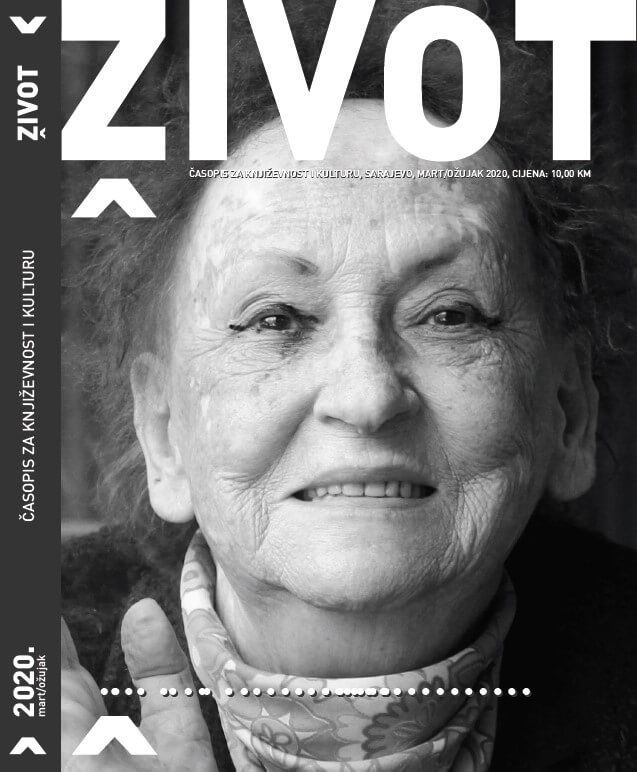
S obzirom na ekološke katastrofe na globalnoj razini, u suvremenoj filozofiji i umjetnosti odnos čovjeka i prirode čini najvažnije pitanje dvadeset prvog stoljeća. U svojoj utjecajnoj knjizi "Ekologija Drugog" (2011) francuski filozof Philippe Descola tvrdi da suvremeno društvo nikad nije postalo moderno, jer je priroda odvojena od sfere socijalnog i, sukladno tome, još uvijek postoji jaz između prirode i kulture. Nastavljajući svoju argumentaciju u ovom smjeru on tvrdi da konstituciju zapadne moderne obilježava upravo ova podjela i nepomirljiva suprotnost, i s obzirom na tehno-naučne promjene zemlje, ekologija i pitanje o globalnim uvjetima preživljavanja čovjeka postaju središnjim predmetom zanimanja filozofije, znanosti i umjetnosti. Ako se to ima u vidu, onda ekologija nije nauka, nego kompleks materijaliteta prirodnog okoliša koji je u permanentnoj krizi, kompleks što traži odgovore na pitanja kako doprijeti do unutrašnjosti svijeta, kakav treba da bude, odnosno kakvim će taj svijet postati?
More...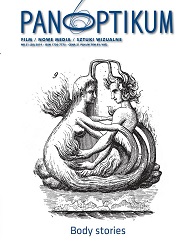
This paper is based both on my empirical experience, related to the implementation of artistic projects in biological laboratories, and on theoretical consideration. It focuses on the cultural and biological meaning of liminality. First, I introduce the idea of liminality derived from anthropology, and more precisely from the theory of the trigeminal structure of ritual as formulated by Arnold van Gennep and developed by Victor Turner. Then, to those anthropological theories pertaining to culture I add the voice of Susan Merill Squier, who draws attention to the fact that technological changes around our corporeality should affect the expansion of liminality and its biological significance. Finally, I refer to her concept of the existence of liminal beings − non-human agents living in the area of the in-between, between any current form of embodiment and a future one. In Squier’s opinion in being humans we become liminal while coexistence with liminal beings can help us to pass this important bio cultural ritual. I would like to post the question: what does this coexistence look like? Can bio art create an opportunity for this coexistence?
More...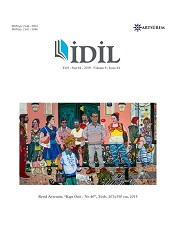
Contrary to the Renaissance period, in which the ideal, balanced and harmonious was accepted in the development of art that have gone back to a long time ago, Baroque concept of art, in which the expressive, stagnant or moving expressions gained importance with it's large contrasts of form, have been felt mostly from the end of 16th century until the early 18th century. Today still continues to influence the areas such as fashion, architecture, sculpture and painting. Baroque art developed in Italy under the leadership of Caravaggio and spread throughout Europe. Diego Velázquez, who created a new sense of art based on Caravaggio's style; was one of the pioneers of Spanish Baroque art. Based on Velázquez’s works of portrait and daily style, it was possible to obtain detailed information about Spanish women, men and children fashion, clothing habits, style and design features, fabrics and accessories during the baroque period. In this respect, it can be said that the works of the painter are important data in the illumination of baroque fashion. The aim of the study is to examine the clothes and accessories of the figures in the works of Diego Velázquez in terms of features such as model, fabric, color, pattern and reveal the traces of baroque fashion in art.
More...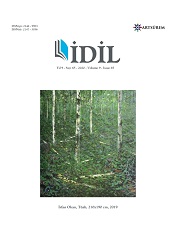
Being a term that embodies from art to design, from science to all fields being classified as daily routines, creativity has been discussed with different perspectives throughout the history, and various definitions and classifications have been made for it.The existing definitions and classifications related to creativity are kept out in this paper, and it is dealt with a more different sincerity by involving human perspective. After briefly touching on creativity, the paper discusses an important figure to be able to read the term thoroughly. This figure is Herbert Alexander Simon (1916-2001) who observed in the twentieth century that creativity spreads along three disparate fields of applied sciences – social sciences, behavioral sciences and computer sciences. He was a “Renaissance man” although this term seems like a chronological mistake in modern times.Simon spent 60 years of his career on studies relating multidisciplinary creativity. The idea of design is based on the principles Herbert A. Simon introduced in his 1969 article. Being reduced into five main phases, these principles underlie the idea of design: empathizing, defining, ideating, prototyping and testing. It is worth emphasizing that each of these five phases underlined by Simon has creativity-supporting qualities in itself and is critical in all fields, not just in designing.The objective of this paper is to underline the importance of the power of creative human which is the most priceless thing today. The reason why it’s priceless is that rapid development of technology (especially, computer technology) in a globalized world in the late 20 years has changed creative potential of individuals. In order to achieve the objective, the importance of creativity is explained in terms of realizing, confrontation, process and product. Moreover, it is underscored that creative people are the ones who will shape the future of societies.Therefore, the common features of artists, designers, scientists, writers etc. who are in pursuit of the new and the different, and spend most of their lives on studies and theories relating their own professions are that they all have the power of changing and transforming the existing by using their creativity. A creative individual of the information age that we live in today must read a lot, watch, research and feed own creative intelligence consistently with verbal and visual inputs. As a result, he/she must increase the possibility to find new and original solutions.
More...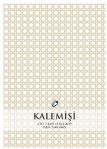
This research is based on Kandinsky’s improvisation and his philosophy. In this study; the concept of of stimming and its similar sides with islamic philosophy is tried to be revealed. Kandinsky’s life and artistic stages have been mentioned throughout the research.
More...